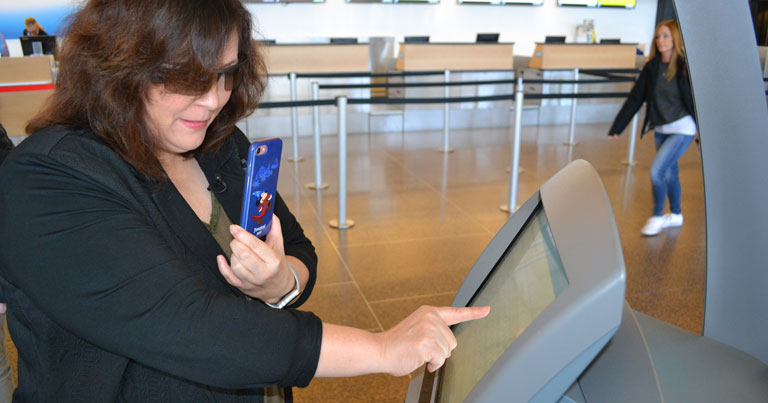
The Port of Seattle has launched a new pilot programme to help blind and low vision passengers access a new assistive technology to safely and independently navigate Seattle-Tacoma International Airport.
Sea-Tac Airport has partnered with Aira on the initiative, following in the footsteps of the likes of Houston Airports and Memphis International Airport.
The Port of Seattle will cover the cost for any traveller using the Aira service, which connects people who are blind and low vision to certified, live agents via smart glasses and a mobile app to navigate every step of the airport experience, from the curb and check-in area all the way to the gate.
“Our airport seeks to meet the needs of all travellers,” said Courtney Gregoire, Commission President, Port of Seattle. “We are prioritising customer service, innovation investments, and community partnerships to make Seattle-Tacoma Airport more inclusive and the most accessible airport in the United States.”
The technology uses smart glasses and a mobile app to seamlessly connect the user to a live, human agent that can see the environment around the user in real-time. Agents can then serve as visual interpreters to accomplish a variety of tasks in the airport – from viewing a flight information board to finding the queue line at a security checkpoint to verifying their luggage at a baggage carousel.
“Travel is such an important part of many people’s lives, whether they are blind, low vision, or sighted,” said Suman Kanuganti, CEO of Aira. “We are so proud to partner with Sea-Tac Airport to provide equal access to visual information to all airport travellers and expand the Aira airport network to the West Coast.”
Aira is a subscription service that includes a mobile app, a pair of smart glasses, AT&T data, and by-the-minute access to live, human agents for a monthly fee. Sea-Tac Airport will cover the cost of all minutes used by Aira’s customers while they visit the airport. Aira’s users will now be able to use the service, without deducting any minutes from their regular plan.
Sea-Tac Airport is one of the busiest in the nation, serving more than 45 million passengers per year. With more than 20 million individuals who are blind or low vision living in the United States, and more than 285 million worldwide, this programme is poised to have a major impact on these flyers as they travel to or from the Pacific Northwest.
“As the largest employer of people who are blind on the west coast and the largest employer of people who are deafblind in the nation, we are enthusiastic to see organisations like the Port of Seattle experimenting with technology to make their environments more accessible,” said Melanie Wimmenauer, Vice President of Communications and Service Business, The Lighthouse for the Blind, Inc.






